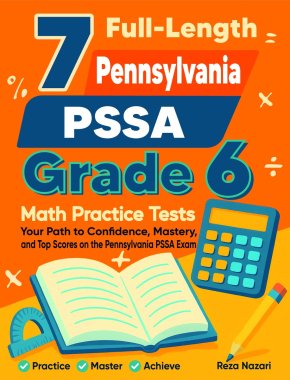How to Apply Integers Multiplication and Division Rules?
Using the rules of multiplication and division, two integers can be easily multiplied or divided. In this step-by-step guide, you will learn these rules.
[include_netrun_products_block from-products="product/6-south-carolina-sc-ready-grade-3-math-practice-tests/" product-list-class="bundle-products float-left" product-item-class="float-left" product-item-image-container-class="p-0 float-left" product-item-image-container-size="col-2" product-item-image-container-custom-style="" product-item-container-size="" product-item-add-to-cart-class="btn-accent btn-purchase-ajax" product-item-button-custom-url="{url}/?ajax-add-to-cart={id}" product-item-button-custom-url-if-not-salable="{productUrl} product-item-container-class="" product-item-element-order="image,title,purchase,price" product-item-title-size="" product-item-title-wrapper-size="col-10" product-item-title-tag="h3" product-item-title-class="mt-0" product-item-title-wrapper-class="float-left pr-0" product-item-price-size="" product-item-purchase-size="" product-item-purchase-wrapper-size="" product-item-price-wrapper-class="pr-0 float-left" product-item-price-wrapper-size="col-10" product-item-read-more-text="" product-item-add-to-cart-text="" product-item-add-to-cart-custom-attribute="title='Purchase this book with single click'" product-item-thumbnail-size="290-380" show-details="false" show-excerpt="false" paginate="false" lazy-load="true"]

Multiplying and dividing integers are two basic operations performed on integers. Multiplying integers is the same as repetitive additions, which means adding an integer a specific number of times.
Related Topics
A step-by-step guide to applying multiplication and division rules
Rules for multiplication integers
Multiplication of integers is the process of repetitive addition that involves positive and negative numbers, or we can say, integers. When it comes to case multiplication of integers, the following should be considered:
- Multiplying \(2\) positive numbers: When you multiply integers by two positive signs, \(\color{blue}{positive\:\times \:positive\:=\:positive}\)
- Multiplying \(1\) positive and \(1\) negative number: When you multiply integers with one negative sign and one positive sign, \(\color{blue}{negative\:\times \:positive\:=\:negative\:}\)
- Multiplying \(2\) negative numbers: When you multiply integers with two negative signs, \(\color{blue}{negative\:\times \:negative\:=\:positive}\)
Rules for dividing integers
Integer division involves grouping items. It includes both positive and negative numbers. Just like multiplication, dividing integers involves the same thing:
- Dividing \(2\) positive numbers: When you divide integers with two positive signs, \(\color{blue}{positive\:\div \:positive\:=\:positive\:}\)
- Dividing \(2\) negative numbers: When you divide integers with two negative signs, \(\color{blue}{negative\:\div \:negative\:=\:positive}\)
- Dividing \(1\) positive and \(1\) negative numbers: When you divide integers with one negative sign and one positive sign, \(\color{blue}{negative\:\div \:positive\:=\:negative}\)
Two important things to keep in mind when multiplying or dividing integers are:
- When the signs are different, the answer is always negative.
- When the signs are the same, the answer is always positive.
Applying Multiplication and Division Rules – Example 1:
Solve the given expression by using the division of integers rules: \((–30) ÷ (–5) ÷ (–2)\).
Solution:
Here, we have to divide three integers, so we follow the BODMAS rule here because there is more than one operation in this statement. The first step is \((-30÷ -5)\). Now, by dividing \(-30\) by \(-5\), we get \(6\) as the answer. \(6\) is a positive integer, as \(negative\:\div \:negative\:=\:positive\). So, the new expression is \((6) ÷ (-2)\). Now, if we divide \(6\) by \(-2\), we get \(-3\), as \(positive\:\div \:negative\:=\:negative\).
Therefore, \((-30) ÷ (-5) ÷ (-2) = -3\).
Exercises for Applying Multiplication and Division Rules
Perform the following calculations using the addition and subtraction rules.
- \(\color{blue}{-22\times -14}\)
- \(\color{blue}{375\div \left(-5\right)}\)
- \(\color{blue}{\:−110\:×\left(−6\right)×\left(−7\right)}\)
- \(\color{blue}{-1,266\div \left(-2\right)}\)
- \(\color{blue}{308}\)
- \(\color{blue}{-75}\)
- \(\color{blue}{-4,620}\)
- \(\color{blue}{633}\)
Related to This Article
More math articles
- How to Identify Independent and Dependent Events?
- Word Problems Involving Writing a Ratio
- FREE 8th Grade PARCC Math Practice Test
- Counting the Change: How to Master the Subtraction of Money Amounts
- How to Find Domain and Range of Radical Functions? (+FREE Worksheet!)
- 6th Grade IAR Math Practice Test Questions
- How to Use Multiplication Models Rising Up to 1000s Place Values
- How to Do Percentage Calculations? (+FREE Worksheet!)
- The Ultimate 6th Grade Common Core Math Course (+FREE Worksheets)
- 10 Most Common 4th Grade PSSA Math Questions


























What people say about "How to Apply Integers Multiplication and Division Rules? - Effortless Math: We Help Students Learn to LOVE Mathematics"?
No one replied yet.